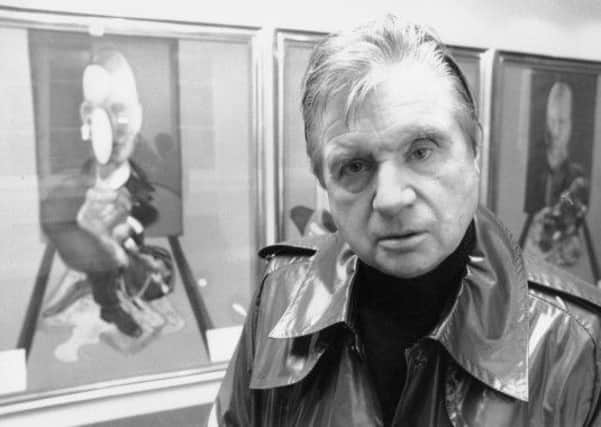Collectors dig deep to put their money where the art is


SIX minutes. That’s how long it took a mystery telephone bidder to spend £89m. Their prize? A painting by Francis Bacon of his friend and fellow artist Lucian Freud. The triptych, Three Studies of Lucian Freud (1969), is considered one of Bacon’s greatest masterpieces and on Tuesday it became the most expensive artwork ever sold at auction after it fetched $142m (£89m) in New York, with the anonymous buyer having to fend off fierce competition to win the bid.
This eye-watering sum eclipsed the $119.9m (£74m) paid for Edvard Munch’s The Scream last year, but it wasn’t the only art record sent tumbling this week.At the same auction, Jeff Koons’s sculpture Balloon Dog (Orange) – one of a series of five stainless steel sculptures in varying colours – fetched $58,4m (£36.7m), the highest price ever paid for a single artwork by a living artist.
Advertisement
Hide AdAdvertisement
Hide AdIf that wasn’t enough, on Wednesday an Andy Warhol painting sold for $105m (£65.5m) in the US, breaking the artist’s record by more than $30m.
Silver Car Crash (Double Disaster) depicts the aftermath of an accident, with a twisted body sprawled across the mangled interior of a vehicle, and is one of four double-panel car crash paintings that Warhol created in 1963.
These are mind-boggling, some might say obscene, amounts of money to pay for works of art. But in a world of supply and demand a painting’s value is now seemingly defined by what someone is prepared to pay for it.
Nigel Walsh, curator of contemporary art at Leeds Art Gallery, says there’s become a kind of two tier market in the art world.
Advertisement
Hide AdAdvertisement
Hide Ad“The art market’s in a peculiar position at the moment. There are huge sales of what you might call ‘blue chip artists’, people like Hockney, Bacon and Warhol, but the rest of the market is not so buoyant.”
There are a growing number of billionaires with vast of sums of money who want something to spend it on, and at the moment that ‘something’ is quite often art. Why buy a football club and all the responsibilities and dramas that come with it, when you can wake up every morning and admire the handiwork of Picasso or Matisse?
But is this boom good for the art world in general? “It’s good and bad,” says Walsh. “It’s good because it puts art in the public domain but it’s bad for museums because they can’t compete in this arena.
“They still want to acquire work because that’s their lifeblood but they don’t have the budgets to pursue these really major works.”
Advertisement
Hide AdAdvertisement
Hide AdJulian Roup, of auctioneers Bonhams, says this week’s astronomical art sales reflect a long-standing rule of thumb. “Whether it’s paintings, cars, or jewellery, the best attract the highest prices,” he says.
The picture became muddied somewhat when the art market cooled in 2008 in the wake of the global financial crash, but since then it has bounced back dramatically.
“With the stock market struggling at the time a significant number of people took refuge investing in art, a strategy we’re a bit cautious about. We advise people to buy what they like and to listen to the experts.”
The recent record-breaking art sales aren’t just a one-off says Roup. “There’s been a major shift in the last five years from West to East in art and Indians, Chinese and Russians are repatriating their national heritage that came this way 200 years ago.”
Advertisement
Hide AdAdvertisement
Hide AdWith art collectors and investors willing to spend vast sums of money the question of what a painting is worth becomes increasingly difficult to answer. For instance, the pre-sale estimate for Bacon’s triptych was £53m.
“When you have two or three people who want the same thing badly enough it can push the price way beyond what is expected,” he says.
Then there’s the history of the work. “What is central to all art sales is that word ‘provenance’. These guys [Bacon and Freud] were mates who sat for each other and had a falling out and this adds to the painting’s appeal,” explains Roup.
One of the trends at the moment is for modern art but Roup suggests the old masters, the likes of Rembrandt and Rubens, offer a more stable investment in the long run given their “provenance”.
Advertisement
Hide AdAdvertisement
Hide AdSo will prices keep heading up? Roup offers a note of caution. “Interest rates look like they might be rising, stock markets are pumping and gold is cooling.
“So you get the feeling there are other options available, but how and when that affects the art market is anyone’s guess.”